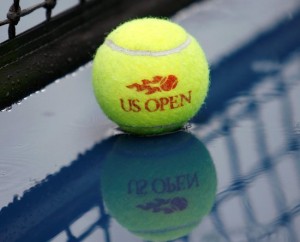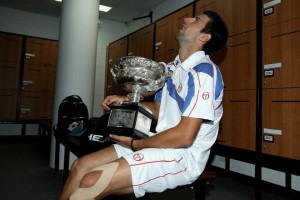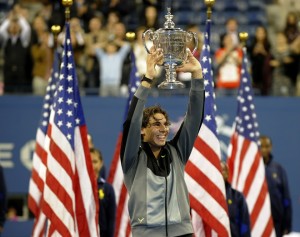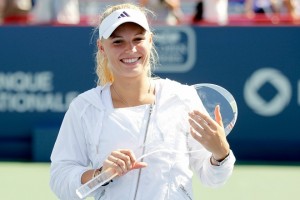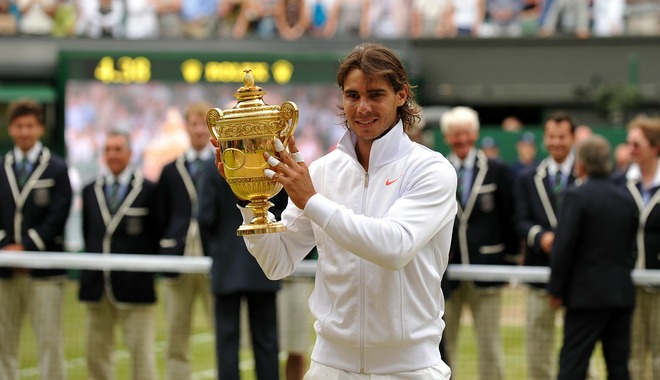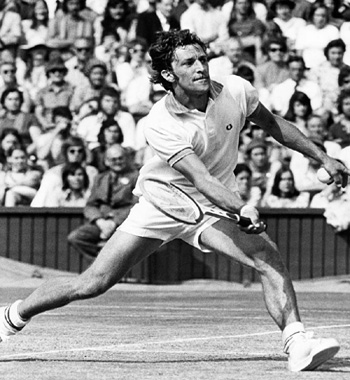Novak Djokovic was on the wrong side of the court, and the celebration, a year ago after the last ball was struck in the U.S. Open final.
Somewhere in the back of his mind, though, as he watched Rafael Nadal fall to the blue concrete and bask in the lights of the world’s biggest tennis stadium, Djokovic had a sense that someday, that could be him.
On Monday night, it was.
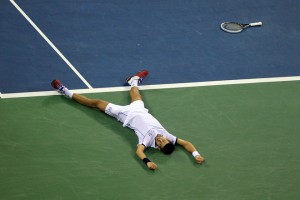
After defeating Nadal 6-2, 6-4, 6-7 (3), 6-1 over 4 hours and 10 minutes of relentless, draining tennis, Djokovic dropped to his knees and kissed the same concrete that Nadal ruled last year, celebrating a win that slapped an exclamation point on one of the greatest seasons in the sport’s history.
A win that, in many ways, came out of a loss on the same court.
“I guess it just clicked in my head,” Djokovic said.
That he could beat these guys.
“I was always trying to wait for their mistakes and not having that positive attitude and believing I could win,” Djokovic said. “This has changed and U.S. Open 2010 was one of the turning points in my career, definitely.”
Djokovic won his third Grand Slam title of 2011 to match what Nadal accomplished last year and what Federer did in 2004, 2006 and 2007. Djokovic bested them both en route to this title, taking down Nadal two days after he overcame two match points against Federer to win the semifinal.
The man they call “Nole” improved to 64-2 on the season. With a few months left in 2011, the best win-loss record in the modern era—John McEnroe’s 82-3 in 1984—is in reach.
However it ends up, victory No. 64 may go down as the most impressive of them all.
Over the first two sets, second-seeded Nadal broke top-seeded Djokovic’s serve three times, and each time, Djokovic responded by doing what a champion does—answering back right away, then not looking back.
But it was the third set that was the classic—84 can’t-miss minutes of side-to-side, unforgiving play from both men, filled with cartoonishly punished groundstrokes that somehow kept coming back.
Nadal won that set, Djokovic walked off the court holding his back and the momentum shifted.
What that did, though, was allow the world’s top-ranked player to once again drive home the point he’s been making all year: Yes, he improved his fitness and, yes, he changed his diet. But mostly, he changed his attitude.
With his back and ribs aching and his legs started to cramp, he said he knew he couldn’t allow the fourth set to turn into yet another long series of rallies. He had to do what he’d been doing all year—go for it.
“I knew I wasn’t physically there,” Djokovic said. “I wasn’t as fit as I was at the start of the match. I needed to take the chances I did. It was an incredible set for me.”
Every bit as telling, and stunning, as any of the 17 winners Djokovic hit in that fourth set (against only four unforced errors), was the way Nadal reacted as the set wore on.
Instead of rushing, skidding, shuffling, reaching out to get one more ball back as is his norm, he stood and watched.
Nadal watched at 30-all in the final game when Djokovic followed his serve with a backhand winner down the line. He watched again on match point when Djokovic hit a forehand down the line, then dropped his racket and fell to the ground to celebrate in almost the exact spot where Nadal did last year.
A bit later, Djokovic pulled off his shirt and threw it into the stands, then put on a dark hat with “FDNY” written on it—a nod to Sunday’s 10th anniversary of the Sept. 11, 2001, terrorist attacks, which both he and Nadal mentioned during the trophy ceremony.
“I’ve had an amazing year and it keeps going,” Djokovic said.
A year ago, Nadal was being celebrated as the next King of Tennis, with nine Grand Slams (Now 10, counting this year’s French Open) and seemingly in need of nothing more than time and tournaments to match Federer, who holds the record with 16. A year later, however, Nadal is on a six-match losing streak to Djokovic—all of them in finals, including this one and at Wimbledon earlier this summer.
“He’s having less mistakes than before,” Nadal said when asked to explain the Djokovic renaissance. “In my opinion, that’s all. He’s confident enough in every moment to keep believing in one more ball, one more ball. I think his forehand is not more painful than before; his backhand is not more painful than before; he serves the same.”
Things, however, are not all the same with Nadal.
Last year en route to the title, he lost five service games and credited improvement there for finally figuring out how to win the only major he hadn’t captured. In this tournament, he lost 24, including 11 in the final. Against Djokovic, Nadal won only 52 percent of the points in which he got his first serve in. He faced 26 break points. Against an opponent who spent most of the night painting lines, this was not a winning formula.
“A lot of times I started the point in worse position than him when I was serving,” Nadal said. “So that’s tough.”
Every time Djokovic hit one of those huge returns, it was hard not to think back to Saturday, when, facing two match points against Federer in the semifinals, he turned on Federer’s serve, taking a chance and pounding it back for a clean, forehand winner—a shot already being touted as one of the single greatest the game has seen.
Djokovic called it a gamble—but one he had no problem taking. He now joins Andy Roddick, Pete Sampras, Boris Becker, Martina Navratilova and Manuel Orantes as the sixth player to hoist the U.S. Open trophy after facing match point at some point earlier in the tournament.
“In big matches, the winner is decided by small margins, a couple points,” Djokovic explained. “I guess the winner is the one who believes in victory more.”

